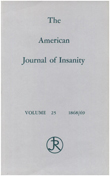Imipramine treatment of panic disorder with agoraphobia: dose ranging and plasma level-response relationships
Abstract
OBJECTIVE: The aim of this study was to characterize the specific effects of imipramine in the treatment of panic disorder with agoraphobia and to delineate dose-response and possibly plasma level- response relationships. METHOD: Eighty patients with panic disorder with agoraphobia were randomly assigned, for an 8-week, double-blind dose-ranging trial, to placebo or to a weight-adjusted dose of imipramine: (low) 0.5 mg/kg per day, (medium) 1.5 mg/kg per day, or (high) 3.0 mg/kg per day. Plasma levels of imipramine and N- methylimipramine, patients' and clinicians' ratings of panic and phobic symptoms, and response to treatment according to operationalized criteria were ascertained after 4 and 8 weeks. RESULTS: Rates of dropouts due to drug side effects were 6%, 15%, and 36% in the low-, medium-, and high-dose groups, respectively; 63 patients completed the study. Compliance with the drug regimen was high. There was a positive dose-response relationship, with significant group differences involving primarily the high- and medium-dose groups versus the placebo group. There were no significant differences between the placebo and low-dose groups or the medium- and high-dose groups. For phobias, the best total drug plasma level was in the range of 110-140 ng/ml; higher levels had a detrimental effect. For panic, the probability of response increased quickly with greater plasma levels and then tapered off, with no improvement at levels beyond 140 ng/ml. CONCLUSIONS: The results provide strong evidence that imipramine has specific, clinically significant effects in this disorder, with practical implications for target doses and optimal plasma concentrations, and suggest that different mechanisms underlie the drug's antipanic and antiphobic effects.
Access content
To read the fulltext, please use one of the options below to sign in or purchase access.- Personal login
- Institutional Login
- Sign in via OpenAthens
- Register for access
-
Please login/register if you wish to pair your device and check access availability.
Not a subscriber?
PsychiatryOnline subscription options offer access to the DSM-5 library, books, journals, CME, and patient resources. This all-in-one virtual library provides psychiatrists and mental health professionals with key resources for diagnosis, treatment, research, and professional development.
Need more help? PsychiatryOnline Customer Service may be reached by emailing [email protected] or by calling 800-368-5777 (in the U.S.) or 703-907-7322 (outside the U.S.).



